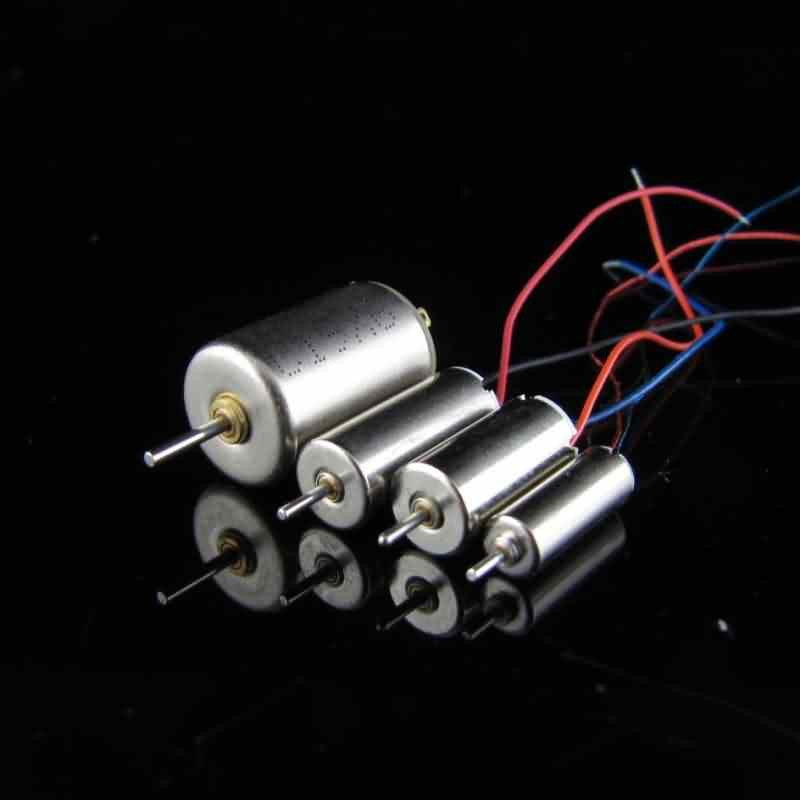News
All About Coreless DC Motor
What is a Coreless DC Motor?
A coreless dc motor is a type of electric motor that comes with a rotor that has no iron core. Ideally, motors feature an iron core, but with a coreless gear motor, you’ll have a rotor winding that’s made of a coil of fine wires.
The stator of a coreless motor is made of hard-to-find earth magnets that are positioned inside the rotor. It features commutators and brushes for controlling the flow of current in the rotor windings, thereby promoting continuous rotation.
You might not know this, but coreless motors operate on the same principle as conventional dc motors. That is, when a current flows through the coil, it supplies a current that forces it to rotate.
The reason behind this construction is to limit the moment of inertia, so your application can function better with a lighter and more efficient motor.
When thinking of a motor for precision, performance, and durability, the coreless DC motor should be your first option.Regardless of the industry application, coreless motors are necessary and recommended.

Types of Coreless DC Motors
There are two major types of coreless DC motors based on their rotor shapes.
Cylindrical Rotors
Cylindrical rotors either feature inside fields or outside fields. The variant that comes outside fields usually has the smallest mechanical time constant.
Disc-Shaped Rotors
This model of the rotor is usually found in pancake rotors, three-coil, and printed rotors.
Why You Should Use a Coreless DC Motor
A coreless DC motor will always be a better alternative to the traditional DC motor, as a result of its absence of an iron core in the motor.
Some of the advantages of coreless motors include:
Compact Design
Due to its small size, a coreless motor is the first go-to option for applications that require little space. Applications such as small toys and miniature applications will need a small yet efficient motor to operate properly, so in cases like this, coreless motors are used.
So, if you are on the lookout for a motor for your application where space and weight are a concern, consider a coreless DC motor.
Functional Optimization
Coreless motors are known for their ability to start and stop in record time, while still providing efficient operation. The science behind this is that coreless motors feature light rotors that produce lesser inertia compared to other DC motors.
Note that, the absence of iron means a coreless motor doesn’t experience iron losses, because these losses even lower the efficiency of the iron-core motor, through the conversion of electrical energy into mechanical energy.
When compared to an iron-core motor, a coreless motor has a higher efficiency of up to 90%. So, a coreless motor is recommended for applications that need high power output with minimal energy waste.
High Torque
Remember that the rotor of a coreless motor has no iron core, rather it uses fine wire coils. This mechanism allows the motor to conduct the distribution of current across the rotor, uniformly; thereby resulting in greater torque.
Also, with coreless motors, you’ll not experience torque lags, and that’s because there’s no grooved silicon steel sheet, meaning no hysteresis loss.
High Power Density
A coreless DC motor is compact and very efficient as well. In comparison to traditional coils, the induction coil of a coreless motor is lighter.
The power density of a coreless motor is its ratio of output power to either volume or weight.
Coreless motors have no use for grooved silicon steel sheets, so there’s no hysteresis loss or eddy current.
The eddy current loss of the copper coil in a coreless motor is easy to manage, and this directly improves the efficiency of the motor.
Reliability
Do you want a motor with precision and efficiency? Then you should look into coreless DC motors. Due to their compact size, they provide higher levels of motion and accurate precision.
With proper maintenance, your coreless motor can last for many years, while still boosting of optimal performance.
Durability and Safety
Coreless motors don’t have iron cores, meaning there’ll be less occurrence of sparks and arcing that happens between the brush and commutator of a DC motor.
Sparking can result in wear and tear of the components of a coreless motor, and even generate electromagnetic interference.
So, with its coreless design, there’s less winding inductance and less noise.
High Speed
Coreless DC motors operate at really high speeds, hence why they are ideal for high-speed applications like medical instruments. Their lighter rotor makes it possible for higher rotational speeds and faster motion.
Less Noise
Compared to traditional DC motors, coreless motors are less noisy. So, if you have a project where noise is a major concern, keep in mind that a coreless motor will give you the quiet operation you desire. This is mostly a concern for medical and office equipment, that’s why it’s common to find coreless motors in many medical devices like prosthetics and insulin pumps.
Click to learn: How to safely make a coreless motor
Drawbacks of Using a Coreless DC Motor

It’s not all rosy when it comes to coreless gear motors; you’ll experience some challenges. However, the advantages far outweigh the “cons”. Let’s discuss the drawbacks, stay with us.
Overheating
You might notice that your coreless motor is heating up after an extended usage, you don’t have to fret because it’s quite normal. They reach extremely high RPMS, meaning they can heat up quickly.
A coreless DC motor needs external cooling, meaning its encasing needs to have proper thermal conductivity, or you’ll have constant overheating issues. Or, consider installing a cooling system, as it cannot handle overloads.
On that note, it’s not a wise choice to use a coreless motor for applications where a quick start and stop process is carried out, especially in rapid succession. This is because you are subjecting the coreless motor to over-usage.
Due to this drawback, coreless motors need more maintenance because with constant heating the bonding windings will become less effective with time. So, coreless motors are not ideal for projects or applications that require extended periods of usage.We’ll discuss suitable applications of coreless DC motors soon.
What to Consider When Choosing the Right Coreless DC Motor
You don’t just pick the first coreless motor that pops up on your online shop or the first affordable model you come across on the market. Using that style, you are likely to get a coreless motor that will not be optimized for your application.
Speed and Torque
These two factors determine the performance of most motors. The speed and torque of a coreless motor are dependent on the level of voltage applied to the motor terminals and the load put on the shaft.
So, take into consideration the required voltage of your project before making a choice.
Size and Weight
Ideally, coreless motors are small and lightweight, hence why they are used in portable projects. However, their sizes still vary, and that’s why you should make a selection based on the power output and torque requirement of your application.
It makes no sense to buy a coreless motor that’ll add excess load to your project when it can be avoided. So, if you are dealing with a project where size is a major concern, then go for the smallest sizes of coreless motors.
Budget
This should be at the top of the list, because how do you purchase a coreless motor that’s above your budget? It helps to outline a budget, so you can make choices within your price range.
Another way to beat prices is opting for used coreless motors; although not advisable unless you go with a professional that can help you secure a great deal for less price.
CATEGORIES
LATEST NEWS
CONTACT US
Name: Wei Tian
Mobile:+86 13724387973
Tel:+86 13724387973
Whatsapp:+86 137-2438-7973
Email:[email protected]
Add:Room 1705, Building 1, Vanke Xingcheng Xingchen Building, Xingxing Road, Xingxing Community, Xinqiao Street, Baoan District, Shenzhen

